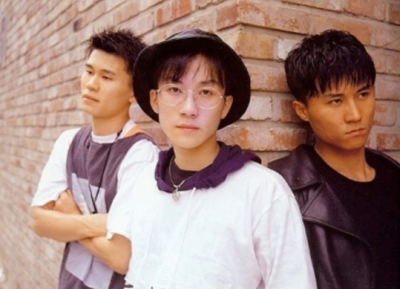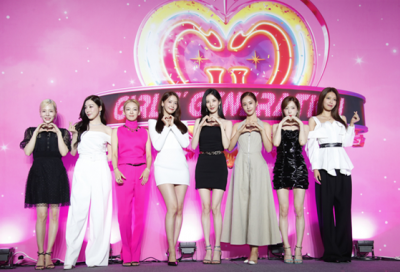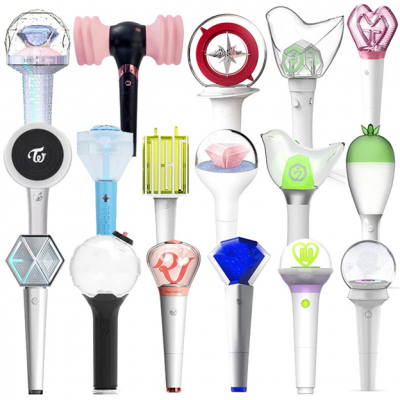Hae-jeen Ryou
Generation One
Through the decades, K-pop has expanded in terms of choreography, genres and merchandise. This three-part series discusses the different generations of K-pop. In the previous blog, we talked about the history of Korean music before the rise of K-pop idols. Today, we will discuss the first two generations of K-pop and the rise of the Hallyu Wave.
The first generation of K-pop started with the debut of the trio boyband, Seo Taiji and Boys. They debuted in 1992 on MBC’s Talent Show, a national televised show in Seoul. Seo Taiji and Boys’ popularity was overwhelming from the start. Seo Taiji and Boys’ debut song “I KNOW” introduced a new sound and style of music into Korean mainstream culture. The song incorporated more Western style of pop instead of the more traditional Korean music and funk. With this change, Seo Taiji and Boys grew popular with the younger generation. This provided more challenges, but more room for exploration within Korean pop music. After their incredible success, Seo Taiji and Boys disbanded and each member went on their own paths. Seo Taiji continued to do music as a soloist, while Yang Hyun Sik set up an entertainment company, Y.G. Entertainment, that dominated K-pop in the early 2000s. The last member, Lee Juno, was involved in a scandal and is no longer covered in media. After their disbandment, a new group of artists came into the spotlight.

Figure 1. Seo Taiji and Boys
H.O.T. became the first group to be named “idols” in the industry. Idols can be defined as students who undergo intense training for the purpose of debuting as dancers and singers. H.O.T. debuted under the management of S.M Entertainment and quickly gained a huge fan base. After H.O.T., more groups such as S.E.S., G.O.D., and Shinhwa debuted and expanded K-pop nationally, solidifying the sound of Generation One K-pop. Soloists such as BOA and RAIN were also very popular during this time. Their strong visuals, based on the Korean beauty standards such as pale skin, thin bodies, and symmetrical facial features, and their “scandalous” performances and music videos were perceived as risqué.
Most K-pop groups of this time promoted their music by going on music shows. Korea took influence from the Western TV channel MTV and produced their own version of music charts and awards. These music shows were a way for artists to show off their performances and gain popularity. As technological advancements progressed and broadcast companies started televising variety shows, more opportunities for idols arose. These variety shows allowed idols to introduce themselves to people not in their immediate audience group and gain popularity in a larger age range.
Generation Two
Generation Two of K-pop starts around 2001 and ends around 2011. Many more idol groups debuted, such as Big Bang, Girls Generation (SNSD), Shinee, 2NE1, Wonder Girls, and Super Junior. The choreography of each generation became more intricate over time. However, one of the main differences between Generation One and Generation Two were the different types of merchandise that were sold with the groups’ albums.
The classic album consisted of the CD and a photobook with the album description. However, starting in Generation Two, the first photocard was printed by SM entertainment. A photocard is a collectible picture of a member or group, about the size of a debit card. The first appearance of these photocards were in Girls Generation’s album “Oh!” in 2010. As more companies started to print their own photocards, many also added goods like multiple photocards, postcards and posters to their albums. Fans were excited for these additions and used these tradeable collectibles as a way to communicate with others within the fanbase.

Figure 2. Girls Generation 2022 “Forever 1” Press Conference
During this time, the first lightstick was made for and by the K-pop group, Bigbang. The members wanted to see their fans in the crowd while they performed and proceeded to have lightsticks made for fans to purchase. With the release of “the Bangbong,” the official name of Bigbang’s lightstick, many idol groups were influenced and produced their own. This allowed each fandom to be more uniform, feel independent from other fandoms during performances, and created a sense of fandom loyalty.

Figure 3. K-pop Lightsticks
The emergence of collectibles and fandom loyalty, on top of the idols’ performances and music, made K-pop a big hit across the nation and outside of South Korea. Between 2001 and 2011, the first expansive wave of Hallyu media expanded across Central and South Asia. “Hallyu” is a Korean term defined as Korean media, such as Korean dramas, movies, music, food, etc. This spread of Korean media is known as the “Hallyu Wave”. Prior to K-pop, Korean dramas and movies were already being consumed outside of Korea. However, as more K-pop groups emerged and fanbases expanded, the Hallyu Wave extended to Western hemisphere. As we explore later generations in our final blog, we will see more global accomplishments and recognition for K-Pop artists and the effects of COVID-19 Pandemic on the genre as a whole.
Check out our playlist featuring music from K-pop Generations one and two below!



ilovekpop
I love this
So much